Your Cart is Empty
MOTO Products
shop your way
Choose a shopping experience
Same great Risk Racing products, 3 completly different ways to shop them.
Choose a shopping experience
Same great Risk Racing products, 3 completly different ways to shop them.
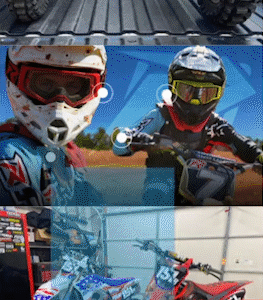
Lifestyle Shopping
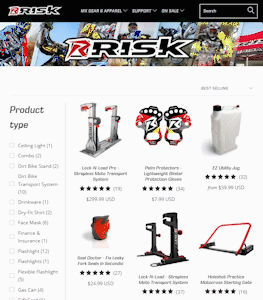
eComm Shopping
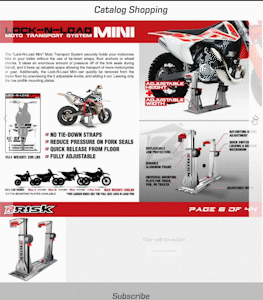
Catalog Shopping
MOTO TYRES
MOTO Gear & Apparel
How to Get a Holeshot in Motocross: The Complete Guide
August 06, 2020 11 min read
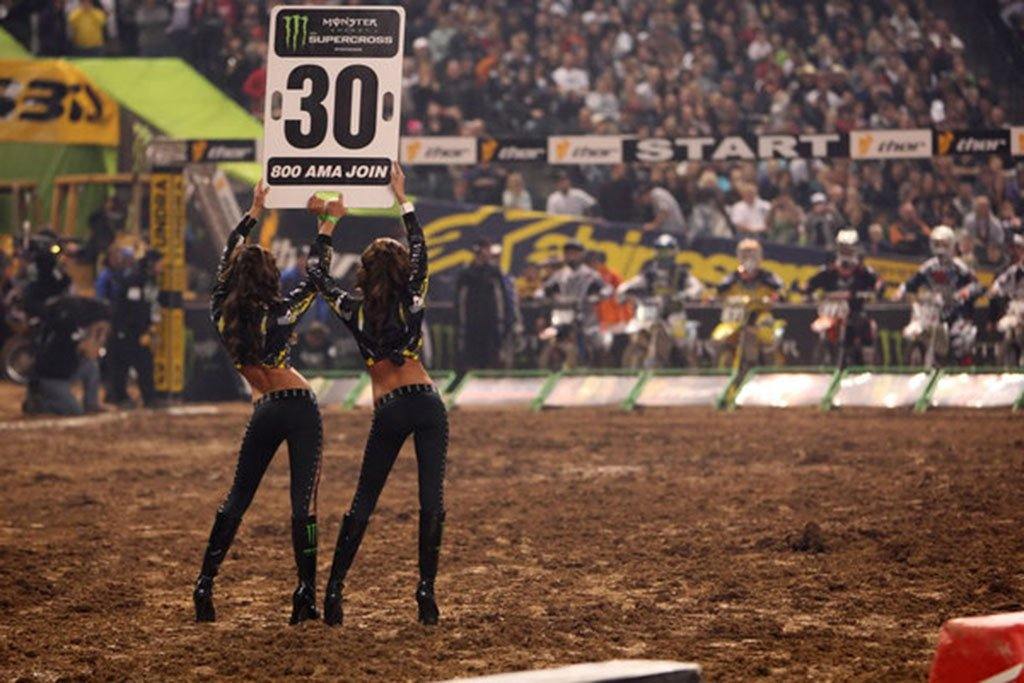
In motocross, the start is probably the most important part of a race. If you're able to get in front of the pack early and grab the holeshot, it gives you a massive competitive advantage and increases your chances of taking the checkered flag or being on the podium at the end of the race.
To get a holeshot in motocross, you need to keep an attack position and put your weight on the front wheel when the gate drops. This helps to prevent your bike from wheelieing or spinning out. The best way to perfect your launch technique is to practice with a Risk Racing Holeshot Motocross Gate.
If you've been struggling with your starts in motocross, you've come to the right place. The rest of this article will provide you with a thorough guide on how to get a holeshot in motocross, comprehensively covering the tips mentioned above and several others.

Get Your Body Position Right
The way you position your body on the bike is very important. This generally involves how you position your arms, fingers, head, butt, back, knees, and feet. Getting the correct body position on your bike can be hard, but it isn't impossible.
If you've ever watched a motocross race, you'll notice that most of the riders look the same and are in very similar positions. The best starting position in a motocross race involves sitting forward on the bike with both feet on the ground. Keeping your weight on the front wheel makes it easier for you to throttle out and launch when the gate drops.
Your chin should be over the handlebars and elbows out, aiming towards the sky. For better control, keep your knees tight on the sides of the bike. Your feet will help you maintain your balance with the ground until the gate drops. Watch for the gate drop with your peripheral vision rather than directly at it. As the gate drops, take your feet up and lean forward into the bar pad.
Avoid sitting too far back on the bike or having your legs out in front of you. This can cause a wheelie and throw you off balance as the bike takes off, leaving you to watch the rest of the pack speed away while you struggle in the dust. Perfecting your body positioning may require repetitive practice.

Use Proper Clutch and Throttle Control Technique
Clutch control is very important at the start of a race. Getting your bike ready for engagement ensures you don't get run over in the first corner. Your left hand will do all the work of gripping and controlling the clutch.
Grip the clutch lever with your index and middle fingers and grab the end of the handlebar with your pinky and ring finger. Using two fingers on the bars gives you better control of the bike. With this setting in place, select the proper gear on your transmission.
Usually first or second depending on the bike, start straight, and track conditions. Second gear is usually preferred as it is less likely to wheelie out of the gate, and you can stay in gear and on the throttle longer down the front straight eliminating the time it would take to shift from 1st to 2nd. It's always a good idea to put your gear in place when you get the 5-seconds start alert.

Just before the gate drops, hold the throttle to about half to three-quarters of the way open. At this point, your bike should be in gear, preferably 2nd. Before the gate drops, slowly release your clutch to the point when you start to feel the transmission engaging.
If your bike tries to creep forward, a little pressure on the front brake will hold it back. By doing this you have engaged all the moving parts to the very point where your bike will launch, including taking all tension out of the chain. This will actually smooth out your launch. Kind of like pre-tensioning a tow rope before you tow something rather than letting the tow vehicle take a running start before the rope is tight.
When the gate drops, release the clutch in a smooth, slow motion and twist the throttle. If you release the clutch too quickly without the proper amount of throttle, it can stall your launch. However, if you release the clutch too quickly and too much throttle, you may wheelie or spin out.
In fact, you will use your clutch and throttle simultaneously to control your launch. Feather your clutch in and out as you launch to maintain throttle position and engine RPM. Feathering the clutch will ensure you always keep the motor in a higher RPM and in the powerband. If you drop the clutch too fast and your motor bogs, you will have a slow start due to waiting for the engine to get back into the sweet spot of the RPMs. This technique is more important on smaller engine bikes and 2 strokes, but helpful on all bikes.
During take-off, keep your body in the same forward position and your legs squeezing the sides of your bike. With your bike in second gear and the throttle to half to ¾ of the way open, your bike will take off as soon as you feed power to the rear wheel with the clutch. At the point the clutch starts engaging, you will need to roll on more throttle.

Get a Practice Gate and Perfect your Holeshot Technique
The key to consistently getting the holeshot in motocross is practice and experience. As the saying goes, "practice makes perfect." Some of the best racers in the game practiced thousands of times to perfect their start. The more you practice your body positioning, clutch and throttle control, the better you'll get at taking off.
Incorporate your take-off technique training as a daily drill until it becomes a part of you. To make your practice even more effective, create a real race experience with the Risk Racing Holeshot Motocross Gate. Whether you're an experienced racer or a motocross rookie, this is one of the best ways to take your holeshot techniques to the next level.
The Holeshot Practice Gate or simply "Holeshot" is an electronically controlled practice gate that helps you train independently. It comes with a wireless remote which you can mount to your crossbar if you're practicing alone.

When you press the button on the remote, it will activate a timing sequence that drops the gate randomly between 1 to 5 seconds. If you have a motocross trainer or moto parent, you can use the instant drop feature where you connect the remote directly to the gate. This deactivates the random timing sequence, and the gate will drop immediately when someone presses the button.
Here's a demonstration video from Risk Racing:
If you want to reset the gate, you don't need to dismount from your bike. All you need to do is step on the backside of the hoop, and it will lock in by itself. If you want to practice with your friends, you can link multiple Holeshots together by plugging them into each other using a linking wire included in your package. This also makes it great for practicing holeshots with quads / 4-wheelers.

Practicing with the Risk Racing Holeshot Gate is the best way to improve and perfect your reaction time to gate drops. The device allows you to practice in the same conditions as in the race you have coming up. You have to practice multiple times until you're sure you have enough in the bag for anything that might be thrown your way.

Choose Your Line and Prepare the Ground
Each motocross track is prepared differently, and you'll have to choose the line that's best for you. To get a holeshot, it's best to choose the inside line as it's the shortest distance through a corner. A line with a smoother arc is better as it helps you hold off other riders on outside lines and easily hit the perfect apex to get ahead of everyone.
Also, the rut should not be too deep or have too many bumps. A too-deep rut can get your leg or part of the bike caught up. If you're struggling with a line, switch to a new one before you're left, literally in the dust. While it may sound obvious, a lot of riders, especially beginners, keep struggling in a race without trying a new one. Most of the time, there'll be a better line.
In motocross, you're usually allowed to prepare the rut behind the gate, but often no prepping in front of the gate is allowed. Shovel the dirt in the rut and pact it down with your boot to make it smooth. Also, be sure to kick away chunks of dirt or rocks and straighten out bumpy parts. Obstacles like this can disrupt your starting momentum and reduce your chances of getting the holeshot.
To get better traction as you launch off the gate, make a little ramp at the gate. If you're starting on a concrete pad, clear out the area as much as you can. If you're given a broom or have access to one, it can be useful for clearing out loose dirt.

Avoid a Wheelie
While wheelieing a dirt bike looks really cool and is a great skill to show off when the time is right, but it's best to avoid them as much as possible when trying to holeshot a motocross race. In most motocross races, the rider that does a large wheelie is usually a beginner and rarely do you see them winning the holeshot. Watch the pro’s start. They may float their front tire 6 in - 10in off the ground, but they never pull the bike into a tall wheelie.
Always remember to keep your weight forward and feed power to the rear wheel with the clutch. A holeshot device mounted on your front suspension can help in preventing a wheelie when taking off. The key is to keep your frontend as low to the ground as possible.

Use a Holeshot Device
After practicing and getting confident to some extent, try out a holeshot device. The holeshot device is widely used among rookies and pros alike. It's particularly useful if you have trouble preventing a wheelie at the start of a race. While there is some debate about its effectiveness, the general consensus is that it works well for improving starts.
The holeshot device consists of a locking mechanism that attaches to your front fork guard. It works like a clamp that compresses your front suspensionand holds it in a lowered state and helps to lower the center of gravityof the bike and reduces the chanceof your bike from spinning out or wheeling out of control.
Its main job is to lower the Center of Gravity. By lowering the front of your bike, it now takes more energy to lift your front wheel off the ground when taking off, putting power to the ground. When the gate drops and you get up to speed, the first bump you hit with your front suspension will unlock the device and allow the fork to decompress to a normal position.
Depending on how experienced you are, a holeshot device can be difficult to install. You'll need a drill bit set, ruler or tape measure, and a few other tools. Here's a video to show you how to install it properly:
Keep in mind that a holeshot device doesn't replace the need for proper body positioning. You'll still need to keep your weight over the front of the bike and lean into the bar pad at the drop of the gate. Other elements such as practice, clutch and throttle control, and launch technique go into a winning formula.
The holeshot device isn't for everyone. You may find it extremely useful if you're a beginner. If you see it as part of your winning formula, then, by all means, purchase one.
If you'll be using a holeshot device during a race, it's best to incorporate it into your practice or training. If you forget to engage it when the gate drops, the device is useless and won't serve its purpose.
More Tips on Getting the Holeshot

Getting a good start is very important. Here are more tips that can help you in getting the perfect launch and ultimately getting the holeshot:
Starting on Concrete Pads
The type of starting pad will determine your start approach. Concrete starts are completely different from dirt starts. You usually don't get as much traction on a concrete pad as you would on dirt. The amount of traction you'll get will depend on the grit of the concrete pad and the tire's contact patch.
As mentioned earlier in the article, it's important to prepare the concrete pad before take-off. Clean the concrete as much as possible and ensure nothing would get in-between your tires and the pad. Sometimes the whole area will be swept by starters. Other times, brooms will be provided for the racers. You can also bring your own broom to the start to ensure your starting pad is dust and dirt free.
Some tracks or race series do not allow you to bring your tools to the start line. If no broom is provided, put on your gloves and clean your area. For this reason, it's a good idea to take along an extra pair of gloves. Remember that having a clean start pad improves your chances of getting some traction.

Launching on Concrete Pads
Starting on a concrete pad requires less rpm than on a dirt start. Ideally, you want to throttle about a quarter or half of the way open. Too much throttle will send the rear wheel into a spin.
Just as in dirt starts, don't dump on the clutch. When the gate drops, you'll want to release the clutch in a nice and smooth motion. Releasing it too quickly will also cause the wheel to spin. Typically, you'll feed power to the bike until you're out on dirt where the traction is.
It's also important to position your body properly to get a good launch over the gate. Start with a slightly vertical position with your legs down on the ground just in front of the footpegs. This allows even distribution of your weight on the bike. You may grip the sides of the bike with your legs.
Here comes the tricky part. When the gate drops and you launch off the concrete pad, you need to move your upper body forward. You need to time it right and quickly enough as soon as the rear wheel leaves the concrete. Once you're out on dirt, open the throttle and fire on.
However, if you don't do it right, you'll lift the front wheel and go into a wheelie, leaving you with little to zero chances of getting the holeshot.

Keeping a Good Mental Attitude
Your mental game is very important when it comes to motocross racing. You need to keep a positive mental attitude, be aggressive, and visualize yourself getting the holeshot. Professional racers know this, and they use it to get an edge over other riders, even when the race is very competitive.
If you come into a race with a negative mindset, fear, or doubts about taking the top spot, you most likely won't be getting the holeshot or anywhere near the top. Positive aggression is important at the start and every other part of the race. It can be scary going into that first corner in the lead, but it is the only way to consistently win races. If you want podiums pie, you better have the courage to beat 40 other people to the first corner.
Again, the best way to develop a strong mental game and the confidence you need to get a good start is consistent practice. With each practice, you'll be able to master different body positioning, gears, weight shifts, and clutch and throttle control without the risk of losing a race. Repetition and consistency allow you to put everything together.

Recovering From a Bad Start
It may not always be possible to be the first racer in the first turn. If you come up with more experienced and aggressive racers and find yourself behind, you still have a small chance to make up for lost ground. Look for holes between other riders and squeak your way through. If you get a bad launch off the gate, shoot for the inside lines.
Always look for lines that are not too deep or bumpy. You won't always be able to find a perfect line. If you're in this type of situation, it's a matter of looking for the best of a bad lot. If you don’t find unique lines while in a pack of riders, you will simply be playing follow the leader in the same line, with no chance to pass.

Conclusion
Getting the holeshot requires you to be fast, agile, and confident. When the gate drops, everything is usually over in a matter of seconds. As discussed in this article, it's important to get your body position right before and after the gate drops. This hugely determines how you'll take off and if you'll be the rider getting the holeshot.
In motocross, clutch and throttle control is also key during starts. You need to hold the throttle to about three-quarters of the way open and feed power to the bike with the clutch. Also, preparing the rut behind and in front of the gate helps in getting a good launch.
To perfect your reaction time and launch technique, practice with aRisk Racing starting gate, which allows you to create a real race starting condition.
Leave a comment
Comments will be approved before showing up.
Subscribe
Sign up to get the latest on sales, new releases and more …
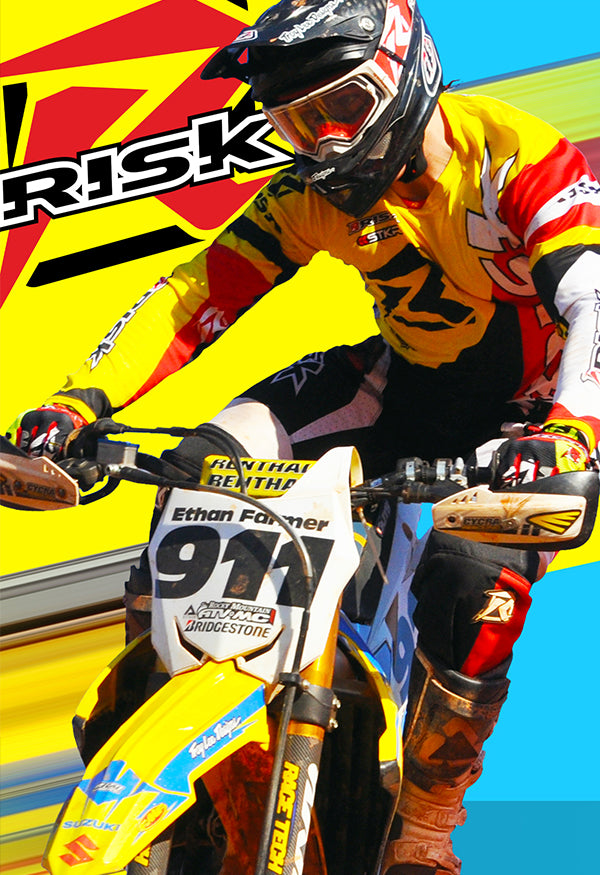
Limited Time 10% Off
Save on your 1st order and get email offers when you join.
Eligible for first-time website purchases only. Emails may take a few minutes to process and could get flagged by email providers as junk so be sure to wait a little bit and check your junk and/or spam folders.

 UK/EU▾
UK/EU▾



























